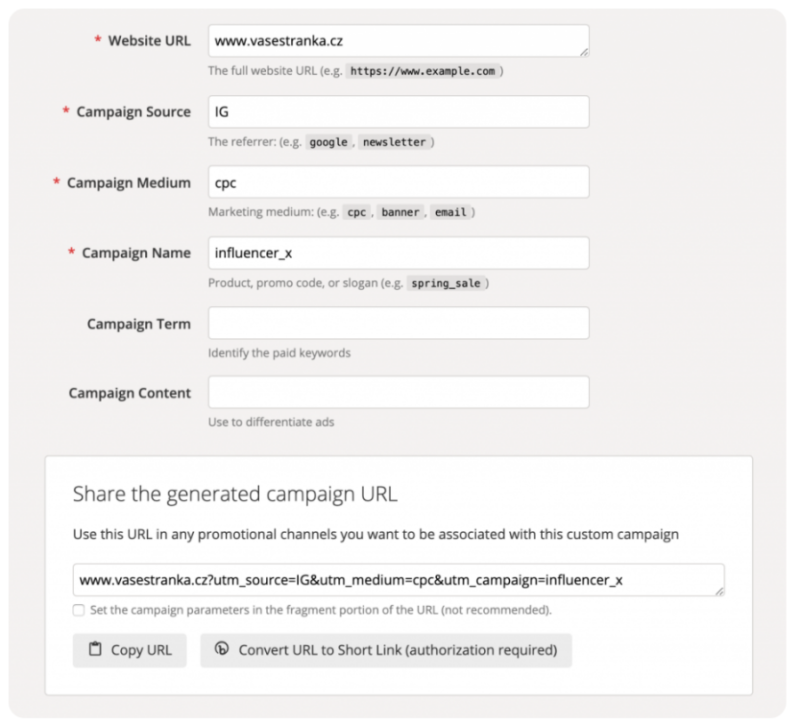
Influencer marketing and how to do it
In recent years, influencer marketing has become an integral part of companies’ marketing strategies. If you want to try it as well, we will provide you with a several tips and tricks of how to do it.
At the very beginning, we should specify what exactly influencer marketing is, why it’s good to use it and what it can bring you. Put simply, influencer marketing uses influential personalities to promote your product, service or brand. People have always taken the advice of family members, friends and experts, and the same applies to modern times. People trust other people, not companies. Through influencers, we can get to a specific audience which is beneficial and profitable for us and we know the audience could be interested in the product, service or brand we advertise. Thanks to this, we can increase brand awareness as well as reach and sales. In addition to this, we can support our own communication and brand building.
When it comes to choosing the right influencer, it’s good to know his/her focus (fitness, food, travelling), audience size (the number of followers) and the engagement. Fan involvement can be tracked using tools such as www.igblade.com. We divide influencers into 4 groups based on the number of followers:
Nano influencer
- 500–3 000 followers,
- close and intensive relationships with fans,
- greater influence,
- mainly barter cooperation,
- doesn’t earn the living on social networks,
- chooses brands and products whose quality meets his/her requirements.
Micro influencer
- 3 000–10 000 followers,
- still relatively strong bond with the followers,
- his/her communication sounds convincing,
- isn’t considered a celebrity,
- barter cooperation may work as well,
- chooses brands and products he/she knows very well or is interested in.
Macro influencer
- 10 000–100 000 followers,
- mostly well-known or famous personalities,
- lower engagement and impact of posts,
- can’t maintain close relationships with fans,
- Instagram provides the accounts with Swipe-up function that allows inserting an active link into stories (only for influencers with 10,000+ followers).
Mega influencer
- more than 100 000 followers
- famous media personalities, celebrities, sportspeople,
- suitable for mass campaigns, increasing brand awareness or launching campaigns,
- the content is seen by many people,
- even lower engagement than with macro influencers,
- prices for cooperation vary greatly.
How to cooperate with an influencer
Ask yourself three questions before you start the whole process:
- What type of influencer are you looking for?
- Which social networks would you like to promote your product/service/brand on?
- How much would you like to invest in influencer marketing?
You should pick an influencer who shares the same philosophy as your company, is interested in your products/services, and doesn’t cooperate with your competitor. If you have a nice, photogenic product, Instagram is the best place where to promote it. If you want to use a video to advertise your product, use YouTube. A blog is a great place for a longer article. Your investment naturally depends on the influencer and the number of followers. Don’t just look at the number of followers, but consider their relevance and engagement.
There are 5 main steps you definitely shouldn’t miss if you’re interested in influencer marketing.
Strategy preparation
At this stage, you should specify the goals you would like to achieve through the right influencer and the communication strategy which will determine how to achieve your goals and means you would use to achieve them. Last but not least, don’t forget to identify your KPIs based on which the cooperation will be evaluated later on. The strategy is really important so don’t underestimate it and ask for advice here.
Selection of a suitable influencer
When choosing the right influencer, you should focus on two key factors – qualitative and quantitative. Among qualitative factors there are:
- audience size – the number of people following the influencer on social sites,
- reach – real reach of his/her posts (the number of people who really see what the influencer posts),
- audience engagement – the number of interactions related to posts of the particular influencer,
- price – compare price/performance ratio of individual influencers.
Quantitative factors include:
- audience demographics,
- affinity for the product/brand – if he/she already knows the brand, uses it and likes it, it’s very likely his/her message will be more authentic.
- relevance,
- reliability.
When looking for the suitable influencer, don’t forget to browse through his/her social sites, posts, hashtags. Find out how active his/her followers are and if they’re fake or not. To do this, you can use a couple of tools, such as www.taggy.cz.
Among the most frequent mistakes made, there is a fact that many companies only look at the audience size. They will neither try to find out if there is anything in the influencer’s past that could threaten the brand’s success, nor if the followers are real. Don’t get fooled and check all the information available!
Agreeing on the conditions and signing the contract
If it is a short-term barter cooperation (a product of a lower value), a contract is not needed. On the contrary, be sure to have you contract signed for more expensive products and financial reward. Pay attention to all legal details of the contract to avoid jeopardizing your brand.
Promotion
Determine the date when the influencer should promote your product/service/brand and add some extra time to it. Don’t forget to make clear how exactly the promotion should look like.
Promotion evaluation
You have successfully chosen your influencer, the cooperation has taken place, and now we need to know if it was all worth it. There are several ways to monitor your marketing plans during the cooperation.
You can track the success of influencer marketing pretty easily through UTM parameter which you insert in your URL address. To do this, you can use Campaign URL Builder. The influencer can then use Swipe-up and redirect his/her followers to your website. Then, you can measure traffic from his/her profile and a number of conversion goals directly in Google Analytics.

An example of inserting a UTM parameter to a URL address
Another option of how to track the success of influencer marketing is through a unique discount code, such as theinfluencersname10. This is the easiest and most reliable way of how to measure your campaign’s success.
Thanks to ROI, you can evaluate what worked perfectly and could be done again in the future, and what you should avoid.

Don’t forget to include everything in the costs. This means internal costs, such as human resources, time and the products provided, as well as external costs, such as influencers’ payments, agency fees and variable costs related to production analysis and evaluation. The benefit, of course, depends on the goal of the promotion. If you aim at increasing your sales, you’re very likely to monitor KPI’s sales, if it is brand awareness, then KPI’s reach, users’ engagement, traffic or media mentions. If you wish to achieve conversions, you will follow KPI’s sign-ups, subscriptions, or downloads.
There are plenty of things to monitor and watch out for when it comes to influencer marketing. However, it’s definitely worth trying it and not being discouraged by an initial failure. If you don’t want to stress over the long and very complex process of influencer marketing, leave the worries to us, and we’ll be more than happy to help you with everything!
